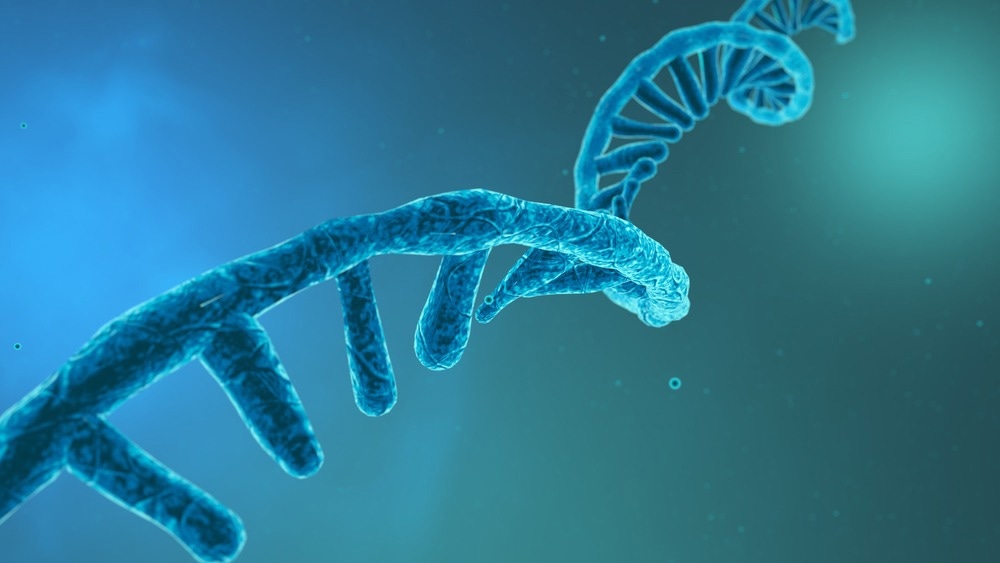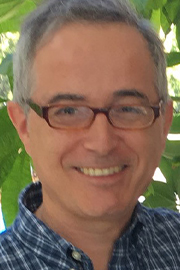In this interview conducted at Pittcon 2023 in Philadelphia, Pennsylvania, we spoke to Philip Bevilacqua from Pennsylvania State University about the world of RNA chemistry.
Could you please introduce yourself and tell us a bit about your current activities?
I am Phil Bevilacqua, a chemistry, biochemistry, and molecular biology professor at Penn State University. I am also the department head there. My research is in the general area of RNA chemistry and RNA biology.
RNA Chemistry: Deciphering the Building Blocks of Life
How has our interest in and understanding RNA changed over the past ten years?
I have worked in the field of RNA for over 25 years, from when I was a graduate student all the way throughout my independent career. This whole experience has been super exciting.
The last ten years, in particular, have seen a real explosion in our understanding of the importance of RNA and biology from micro RNAs and CRISPR for gene editing, both of which have won Nobel Prizes.

Image Credit: CROCOTHERY/Shutterstock.com
The pandemic was also a really incredible time for RNA as the SARS-CoV-2 virus is an RNA virus, and the vaccines were made out of mRNA.
What is a tautomer, and how does it relate to RNA's chemistry?
There has been a huge amount of interest lately in modifications to RNA. RNA is a simple polymer, very similar to DNA. There are only four different side chains and two sizes: a big one in A and G and smaller ones in C and T for DNA or C and U for RNA. They look relatively similar, so there is not much molecular variation.
There has also been increased interest in covalent modifications to RNA, where RNA is modified with a methyl group or an acetyl group, and that regulates gene expression.
What we focus on, however, are the ways in which RNA can be noncovalently modified. One example is tautomers, where the smallest and the simplest element – hydrogen – moves around as protons or proton transfer. While this might not seem that important, it is critical because it can change base pairing specificity and refold RNAs.
What are the usual methods that you would use to investigate these RNA tautomers?
There are two broad approaches that we can use to investigate RNA. One is computational approaches, where we look at submitted databases of RNA structures, and we analyze those on the computer or do simulations with force fields like molecular dynamics or even quantum mechanics. The other approach is purely experimental, where we go into the lab and try to measure differences.
My lab is primarily experimental, although we do utilize some computational aspects. These experiments might look at how the bases react with small reactive molecules.
Exploring the World of RNA Chemistry - Philip Bevilacqua at Pittcon 2023
We also conduct investigations using different types of spectroscopies, such as electromagnetic radiation. We can get information this way, too.
What are the benefits of combining these computational and wet lab experiments to investigate RNA tautomerism?
Computational chemistry has come so far over the last 25 years, and about five years ago, the field also received a Nobel Prize in chemistry for the development of computational methods. This means that we are now able to investigate problems that are extremely difficult, if not impossible, to do experimentally.

Image Credit: Gorodenkoff/Shutterstock.com
Using computational methods, we can move hydrogens around, for example, to initially determine which ones are more likely to be populated. We can then move on to the physical experiments to observe how it actually turns out. This marriage of two methods ultimately strengthens our investigations and our investigation outcomes.
What challenges have you faced yourself or seen in the field when investigating these RNA molecules?
RNA is not a particularly stable molecule, and working with it in the lab is always challenging. For instance, enzymes within a cell, or cell lysates, can degrade the RNA. Therefore, many precautions must be taken when working with RNA to carry out these types of experiments.
Why is it so beneficial to broaden our understanding of RNA chemistry, particularly in the context of understanding how biological systems have evolved over time?
Basic, curiosity-driven research will always be really important. For example, understanding how RNA, a simple molecule with just four side chains, enhances its diversity. This information is key to many practical problems, such as human disease, cancer, etc., to enable us to better understand how RNA might refold and how that might change gene expression.
It is then important to consider how this can be targeted with small molecule therapeutics. Almost all conventional drugs target proteins. There are only very few that target RNA and those that do tend to target ribosomal RNA.
Most of the genome is transcribed into RNA but not translated into proteins. However, there is a vast number of druggable molecules in RNA, and it would be revolutionary if we could figure out how to do that. One of our speakers, Amanda Hargrove, focused on this particular aspect in her talk at Pittcon 2023.
What exciting work are you currently involved in?
RNA has been a massive part of my career, and my team and I are trying to determine whether RNA adopts different tautomeric states or charged states that are not always neutral, so the bases can pick up a proton and become positively charged or drop one and become negatively charged.
What we have developed over the last decade here at Penn State with a number of colleagues, particularly Sally Assmann in the biology department, are ways to use next-generation sequencing technologies to investigate the reactivity of RNA.
Across an entire transcriptome, there may be tens or hundreds of millions of different bases, and we are using new technologies to increase our odds of finding these rare but really important states.
What are the benefits of attending face-to-face events?
The interactions and connections between people are much stronger in person; this exchanging of ideas and developing of new collaborations, I feel, only happens when people are face-to-face.
What are you most looking forward to for Pittcon in San Diego next year?
One of the exciting things about Pittcon is seeing all the new technologies and instrumentation. I would say in my research that it is about 50% technology development and 50% application to biological problems. Therefore, it is always exciting to see that aspect of things.
About Philip Bevilacqua
Philip C. Bevilacqua is a Distinguished Professor of Chemistry and of Biochemistry and Molecular Biology at The Pennsylvania State University, where he is also the head of the Department of Chemistry. His research interests focus on understanding the roles of RNA folding and catalysis in biology. Bevilacqua earned his B.S. in Chemistry with a minor in Physics from John Carroll University in 1987 and his Ph.D. in Physical Chemistry from the University of Rochester in 1993. He completed his postdoctoral research at the University of Colorado, Boulder, under the guidance of Professor Thomas R. Cech. Bevilacqua has received several awards and honors throughout his career, including the Jane Coffin Childs Postdoctoral Fellowship, the Alfred P. Sloan Foundation Fellowship, the C.I. Noll Award for Excellence in Teaching, and the Penn State Faculty Scholar Medal in Physical Sciences. He is also a Fellow of the American Association for the Advancement of Science (AAAS) and a Kavli Fellow of the National Academy of Sciences. Bevilacqua has published extensively, with a total of 196 publications and an H-index of 51 (Web of Science) and 60 (Google Scholar). He has given 160 invited talks at universities and meetings and co-organized several national meetings. Bevilacqua is a member of various professional societies, including the AAAS, the American Chemical Society, and the RNA Society, where he serves on the editorial board.
He completed his postdoctoral research at the University of Colorado, Boulder, under the guidance of Professor Thomas R. Cech. Bevilacqua has received several awards and honors throughout his career, including the Jane Coffin Childs Postdoctoral Fellowship, the Alfred P. Sloan Foundation Fellowship, the C.I. Noll Award for Excellence in Teaching, and the Penn State Faculty Scholar Medal in Physical Sciences. He is also a Fellow of the American Association for the Advancement of Science (AAAS) and a Kavli Fellow of the National Academy of Sciences. Bevilacqua has published extensively, with a total of 196 publications and an H-index of 51 (Web of Science) and 60 (Google Scholar). He has given 160 invited talks at universities and meetings and co-organized several national meetings. Bevilacqua is a member of various professional societies, including the AAAS, the American Chemical Society, and the RNA Society, where he serves on the editorial board.
 About Pittcon
About Pittcon
Pittcon is the world’s largest annual premier conference and exposition on laboratory science. Pittcon attracts more than 16,000 attendees from industry, academia and government from over 90 countries worldwide.
Their mission is to sponsor and sustain educational and charitable activities for the advancement and benefit of scientific endeavor.
Pittcon’s target audience is not just “analytical chemists,” but all laboratory scientists — anyone who identifies, quantifies, analyzes or tests the chemical or biological properties of compounds or molecules, or who manages these laboratory scientists.
Having grown beyond its roots in analytical chemistry and spectroscopy, Pittcon has evolved into an event that now also serves a diverse constituency encompassing life sciences, pharmaceutical discovery and QA, food safety, environmental, bioterrorism and other emerging markets.